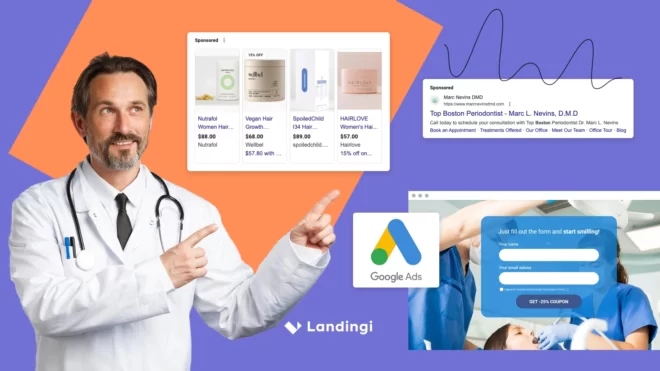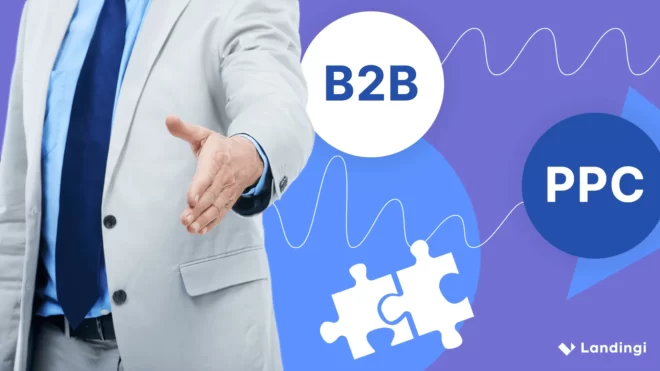Healthcare companies have increasingly turned to pay-per-click (PPC) advertising to enhance their digital marketing strategies. This approach allows them to achieve greater visibility in search results, directly reaching potential patients and healthcare professionals who are searching for relevant treatments and medications. With substantial investments in PPC, healthcare providers can ensure their ads appear prominently when consumers search for specific health-related information, ultimately driving more qualified traffic to their websites and boosting sales, enhancing their online visibility, reaching specific patient demographics, and achieving quick results. This comprehensive guide will delve into the definition of PPC in healthcare, who should use it, key strategies for success, and more.
A successful PPC campaign in the healthcare industry requires a blend of strategic keyword selection, compelling ad copy, and optimized landing pages to drive higher engagement and conversions. One notable tool that has been instrumental in optimizing PPC strategies for medical companies and healthcare businesses is Landingi. This platform provides a robust set of tools for creating high-converting landing pages that are crucial for the success of PPC ads. Effective landing pages can significantly improve conversion rates by providing users with a seamless and engaging experience, thereby increasing the likelihood of turning clicks into customers. By leveraging Landingi’s capabilities, healthcare providers can maximize their ad investments and achieve better marketing outcomes.
Key Takeways:
- PPC advertising in healthcare allows providers to achieve greater visibility in search results, directly reaching potential patients and healthcare professionals searching for specific treatments. This leads to increased website traffic and faster results compared to organic search strategies.
- A successful PPC campaign requires strategic keyword selection and compelling ad copy. Optimized landing pages, which can be created using tools like Landingi, are crucial for driving higher engagement and conversions by providing a seamless and engaging user experience.
- Various healthcare providers, from individual practitioners to large hospitals, pharmaceutical companies, wellness centers, cosmetic clinics, rehabilitation centers, and insurance providers, can benefit from PPC advertising. Each can target specific patient demographics and services to attract new patients and clients.
- PPC advertising is cost-effective as healthcare providers only pay when someone clicks on their ad. It also offers measurable results, allowing providers to track performance in real time and adjust their strategies for better outcomes, such as increased visibility and patient acquisition.
- Ensuring compliance with healthcare regulations and protecting patient privacy is essential. This includes following guidelines like HIPAA, being transparent about the use of patient data, and including necessary disclaimers in ads and landing pages.
- Regularly reviewing and optimizing PPC campaigns is critical. This involves tracking performance metrics, conducting A/B testing, and staying updated with the latest trends in PPC advertising to improve and adapt strategies for better performance and ROI continuously.
What is PPC Advertising in Healthcare?
PPC advertising in healthcare involves creating and placing ads on search engines and other platforms. You only pay when someone clicks on your ad. This method drives targeted traffic to a healthcare provider’s website, with the ultimate goal of converting visitors into patients. An essential part of pay-per-click advertising is a landing page where potential patients land after clicking an ad. To create and optimize landing pages, it is worth using a reliable landing page builder like Landingi. By using such a platform, healthcare professionals can create optimized landing pages that enhance the effectiveness of their PPC campaigns, making it a critical component of healthcare marketing.
PPC ad methods function through a bidding system. Advertisers bid on keywords that are relevant to their services. When a user searches for these keywords, ads are displayed alongside the organic search results. The position of the ad is determined by a combination of the bid amount and the ad’s quality score, which takes into account the relevance of the ad and the landing page experience.
Who Should Use PPC in Healthcare?
PPC should be used in healthcare by a wide range of providers, from individual practitioners to large medical institutions. Here’s a detailed look at who can benefit the most from PPC advertising in the healthcare sector:
1. Individual Practitioners and Specialists
Individual healthcare practitioners, such as doctors, dentists, and therapists, can effectively use PPC to promote their practices. By leveraging healthcare ads through PPC, they can attract new patients, especially those in search of specialized care, making it a powerful tool for patient acquisition. For example, a dentist might use PPC ads to target local patients looking for dental implants or orthodontic services.
2. Small and Medium-Sized Clinics
Small and medium-sized clinics can leverage PPC advertising to increase their visibility in local search results. By targeting specific services like urgent care, pediatric care, or physical therapy, clinics can attract patients looking for immediate or specialized care. PPC can be particularly effective for clinics that want to highlight new services or promote special offers.
3. Large Hospitals and Medical Centers
Large hospitals and medical centers can use PPC to manage a broader range of marketing campaigns. These institutions often have multiple departments and services to promote, such as surgical specialties, emergency services, or oncology treatments. PPC allows them to run targeted campaigns for each department, ensuring that potential patients find the specific care they need.
4. Pharmaceutical Companies
Pharmaceutical companies can utilize PPC to market their over-the-counter (OTC) medications, health supplements, and health products directly to consumers. Companies in the pharmaceutical industry connect with individuals seeking immediate relief or ongoing treatment options by targeting specific symptoms or conditions.
This is particularly noticeable in the United States, where the industry has made significant investments in digital advertising. In 2021, the healthcare and pharmaceutical industry in the United States spent nearly $14 billion on digital advertising, according to Statista’s report “Healthcare and pharmaceutical industry digital advertising spending in the United States from 2011 to 2024”.
5. Health and Wellness Centers
Wellness centers offering services like weight management, physical therapy, or alternative medicine can benefit from pay-per-click advertising. These centers can target keywords related to their specific services, attracting individuals interested in improving their overall health and well-being.
6. Cosmetic and Aesthetic Clinics
Clinics offering cosmetic and aesthetic procedures, such as plastic surgery, dermatology, or laser treatments, can use PPC to reach potential patients interested in enhancing their appearance. PPC ads can highlight before-and-after results, patient testimonials, and special promotions to entice new clients.
7. Rehabilitation Centers
Rehabilitation centers for physical, mental health, or addiction recovery can use PPC to connect with individuals seeking support and treatment. Targeting keywords related to recovery services and therapeutic interventions can help these centers reach those in need of their specialized care.
8. Healthcare Networks and Insurance Providers
Healthcare networks and insurance providers can also benefit from PPC advertising by targeting individuals looking for healthcare plans, network providers, or specific insurance services. PPC can help these organizations attract new members and provide information about their coverage options.
What are the Benefits of Using PPC Advertising for Healthcare?
PPC advertising provides 7 key benefits for the healthcare industry, including:
- Targeted Reach: It allows healthcare providers to increase visibility by precisely targeting their desired audience based on various factors such as location, age, and interests. This ensures that their marketing efforts are directed toward individuals who are most likely to need their services.
- Cost-Effectiveness: With PPC, healthcare providers only pay when someone clicks on their ad. This makes it a cost-effective marketing strategy since they can control their budget and spend it more efficiently.
- Measurable Results: PPC campaigns offer the advantage of easy-to-measure results. Providers can track the performance of their ads in real-time, allowing them to adjust their strategies for better outcomes.
- Increased Visibility: PPC ads help healthcare professionals increase their visibility online, especially on search engines. This is crucial for attracting new patients in a competitive market.
- Quick Entry: Compared to organic search engine optimization (SEO) strategies, PPC allows for quicker entry into the market. Healthcare providers can set up and launch a campaign within a short period, enabling them to promote their services promptly.
- Flexibility: PPC advertising offers great flexibility, allowing healthcare providers to make immediate changes to their campaigns. This includes adjusting keywords, ad copy, and budget allocations to improve performance.
- Brand Recognition: Even if users do not click on the ads, PPC helps in building brand recognition. The more often people see the healthcare provider’s name, the more likely they are to remember it when they need healthcare services.
These benefits make PPC a valuable tool for medical professionals looking to enhance their online presence, attract more patients, and gain a competitive edge in the healthcare industry.
11 Key Strategies for Successful Healthcare PPC Campaigns
Implementing effective strategies by healthcare marketers is crucial for the success of PPC campaigns. Here are eleven key strategies to consider in the medical sector:
1. Understanding Your Patient Demographics
To create an effective PPC ad, start by understanding the demographics of your target patients. This includes their age, gender, location, and specific medical needs. Also, address common health concerns and conditions relevant to your services. Knowing these details allows you to tailor your ads to the specific needs and preferences of your audience, increasing the likelihood of engagement and conversion.
2. Medical Keyword Research
Conduct thorough keyword research to identify the terms potential patients use when searching for healthcare services. Focus on high-intent keywords that indicate a readiness to take action. Include long-tail keywords that reflect specific queries patients might use, such as “best cardiologist in [city]” or “treatment for back pain.” Utilize tools like Google Keyword Planner, SEMrush, or Ahrefs to find relevant keywords and understand their search volumes and competition levels.
3. Crafting Compelling Ad Copy
Write ad copy that is clear, compelling, directly addresses the needs and concerns of your target audience, and communicates the benefits of your medical services. Use strong call-to-action phrases like “Book an Appointment” or “Get a Free Consultation” to encourage immediate action and clicks. Highlight unique selling points, such as expertise, certifications, patient testimonials, and treatment success rates. Use ad extensions such as location extensions, call extensions, and sitelink extensions to provide additional information and increase ad visibility.
4. Optimizing Healthcare Landing Pages
Use a landing page builder like Landingi to create landing pages that are tailored to your PPC ads. Ensure these pages are user-friendly, informative, easy to navigate, mobile-friendly, and fast-loading. Including clear CTAs, contact forms, phone numbers, and options for booking appointments can significantly increase the chance of converting visitors into more leads.
5. Ensuring Mobile Responsiveness
Ensuring mobile responsiveness is crucial, as a significant portion of PPC activity occurs on mobile devices. In fact, 70% of U.S. search ad impressions come from mobile devices (as reported by Nicole Perrin in “Mobile Search Ad Performance Plays Catch-Up”). To capture this mobile audience effectively, make sure that both your ads and landing pages are optimized for mobile use. This includes having fast loading times, easy navigation, and clear calls to action that are easily accessible on smaller screens. By focusing on mobile responsiveness, you can improve the user experience and increase conversion rates from mobile traffic.
6. Implementing Geo-Targeting in Healthcare PPC
Geo-targeting allows you to show your ads to people in specific locations. This is particularly useful for local healthcare providers looking to attract nearby patients. You can target by city, state, or even a specific radius around your practice to ensure your ads are seen by the most relevant audience. Focus on geographic areas where your potential patients are located and incorporate location-specific keywords and targeted keywords to capture local search intent.
7. Medical Ad Scheduling
Schedule your healthcare ads to appear during times when your target audience is most likely to be searching for medical services. This can help maximize the effectiveness of your campaigns. For instance, if your practice is open from 9 AM to 5 PM, you might schedule your ads to run during these hours to ensure someone is available to respond to inquiries. Analyze performance data to determine the best days to run your ads for maximum engagement.
8. Managing Healthcare PPC Budgets
Set a realistic budget for your PPC campaigns and monitor your spending closely. Adjust your bids and budgets based on the performance of your ads. Use budget pacing tools to ensure your budget lasts throughout the campaign period and doesn’t get exhausted too quickly. Continuously monitor and adjust your CPC bids to maximize ROI.
9. Tracking and Analyzing PPC Performance
Use tools like Google Analytics to track the performance of your ad campaigns and conversion metrics. You can also implement conversion tracking (e.g. EventTracker) to measure actions like appointment bookings, form submissions, and calls. Analyze the data to identify what’s working and what needs improvement.
10. Ensuring Compliance and Privacy
Ensure that your PPC campaigns comply with healthcare regulations and protect patient privacy. This includes following HIPAA guidelines and other relevant laws. Including Important Safety Information (ISI) in search advertisements, especially for prescription medications, is frequently required. Moreover, the policy restricts the employment of certain drug terms, particularly those associated with controlled substances, prescription medications not sanctioned in the intended area, or products with a history of abuse.
Be transparent in your ad copy and landing pages about how patient information will be used and protected. Include necessary disclaimers and information about the use of patient data.
11. Continuous Optimization of Medical PPC Campaigns
Regularly review and optimize your campaigns to make data-driven adjustments and improve their performance. Test different ad copy, keywords, targeting, and landing page designs to see what works best. Use A/B testing to compare different elements and refine your advertising strategy based on the results. Keep up with the latest trends in medicine and PPC advertising to stay ahead of the competition.
How to Choose Effective Keywords for Healthcare PPC Campaigns
To choose effective keywords for healthcare PPC campaigns, start by understanding your target audience. Consider the demographics, needs, and behaviors of the patients you want to attract. Are they looking for specific treatments, general healthcare services, or preventive care? Knowing your audience helps you predict the keywords they might use.
Conduct thorough keyword research using tools like Google Keyword Planner, SEMrush, and Ahrefs. These tools provide search volume data and suggest relevant keywords for your business. Focus on high-intent keywords that indicate a readiness to take action, such as “urgent care near me,” “best dermatologist in [city],” “pediatrician appointment booking,” or “diabetes treatment options.”
Long-tail keywords, which are more specific phrases, typically have lower search volume but higher conversion rates. Examples include “affordable dental implants in [city],” “pediatric asthma specialist in [city],” and “24-hour emergency room in [city].” These keywords are less competitive and more targeted, making them valuable for attracting patients looking for specific services.
You can use tools like SEMrush and Ahrefs to analyze the keywords your competitors are targeting. This can inspire ideas for your own keyword strategy and help you identify any gaps in your competitors’ coverage. Smart competitors not only bid for their own branded keywords but also pay to rank for their competitors’ branded keywords. This means that potential and existing customers looking for you on Google could see an ad from your competitor first. Additionally, consider seasonal and local trends, as healthcare needs can vary by season and location. Use Google Trends to analyze seasonal search patterns and incorporate relevant keywords into your campaigns, such as “flu shot clinic near me” in the fall or “allergy testing in [city]” in the spring.
Optimize for voice search, as more people are using voice-activated assistants like Siri and Alexa to find healthcare services. Voice search queries are often longer and more conversational, such as “Where can I find a pediatrician near me?” or “How to book an appointment with a cardiologist?”
Use negative keywords to prevent your ads from showing up in irrelevant searches, saving you money and improving your campaign’s efficiency. For example, if you are a specialized clinic, you might want to exclude general terms like “free clinic” or “home remedies” that don’t align with your services.
Address particular conditions your practice specializes in, such as “treatment for rheumatoid arthritis” or “diabetes management program.” Combine services with location-based keywords, like “orthopedic surgeon in Boston” or “mental health counselor in San Francisco.” Many people search for healthcare information by asking questions, so use keywords that reflect these queries, such as “how to treat eczema” or “what are the symptoms of Lyme disease?”
By following these strategies and continuously refining your keyword list, you can improve the performance of your healthcare PPC campaigns and attract more patients to your practice.
Choosing the Best Ad Formats for Healthcare PPC
To choose the best ad format for your healthcare PPC campaigns, start by defining your specific goals and understanding your target audience. If your objective is to increase brand awareness, display ads and video ads are ideal due to their visual and engaging nature. For lead generation, search ads and Gmail ads are effective as they can target users actively searching for healthcare services or engaging with email content. If you are promoting healthcare products, shopping ads are perfect for displaying product details directly in search results. Understanding your audience’s behavior is crucial; for instance, search ads work well for high-intent users looking for immediate services, while video ads are great for educational content and patient testimonials.
Additionally, consider the nature of your services and your budget. Specialized treatments or procedures benefit from search ads with detailed landing pages, whereas product-based services thrive with shopping ads. If you have a limited budget, focus on search ads for high ROI, but with a larger budget, diversify across multiple formats to maximize reach. Continuously test and optimize your campaigns to find the best-performing ad formats.
For example, a local clinic might use search ads for direct inquiries and display ads for community awareness, while a cosmetic surgery center could leverage video ads for visual impact and search ads for specific procedures.
Different ad formats cater to various user behaviors and preferences, and each has its specific benefits. Here’s a detailed look at the best PPC ad formats for healthcare and why you should consider using each one:
Search Ads
Search ads, also known as paid search, are text-based advertisements that appear on search engine results page (SERP) when users search for medical information or specific keywords related to your services or products.
Reasons for Use:
- High Intent: Users are often actively seeking information or services, making them high-intent prospects.
- Immediate Visibility: Search ads are displayed at the top of SERPs, ensuring that your ad is one of the first things users see. This increases the likelihood of clicks and conversions.
- Measurable ROI: You can track the performance of search ads easily, measuring metrics like click-through rates (CTR), conversion rates, and return on investment (ROI).
Example: A local clinic can use search ads targeting keywords like “urgent care near me” or “24-hour emergency services” to attract patients needing immediate medical attention. This strategy aligns with the search intent of potential customers or patients who are actively looking for immediate medical attention.
Display Ads
Display ads are visual forms of advertising that can be seen on various websites within the Google Display Network. They often include images, graphics, and occasionally videos to capture the attention and interest of viewers.
Reasons for Use:
- Broad Reach: Display ads appear on websites across the Google Display Network, reaching a wide audience. This is useful for building brand awareness.
- Visual Appeal: These ads can include images, videos, and graphics, making them more engaging and visually appealing.
- Retargeting Capabilities: Display ads are excellent for retargeting users who have visited your website but didn’t convert. This keeps your services top-of-mind.
Example: A dental practice can use display ads with engaging visuals of before-and-after treatment images to attract users interested in cosmetic dentistry.
Video Ads
Video ads are promotional content that appears before, during, or after video content on platforms like YouTube. They are designed to capture the audience’s attention through dynamic multimedia elements.
Reasons for Use:
- Engagement: Video ads are highly engaging and can effectively convey complex information. They are ideal for demonstrating procedures, sharing patient testimonials, or explaining medical concepts.
- Wide Distribution: Platforms like YouTube offer vast audiences, ensuring your video ads reach a broad spectrum of potential patients.
- Emotional Connection: Video ads can create an emotional connection with viewers, which is particularly important in healthcare marketing.
Example: A hospital can use video ads to showcase a new surgical technique or provide virtual tours of their facilities, helping to build trust and attract patients.
Shopping Ads
Shopping ads are a type of advertisement that showcase images of products, their pricing, and information about the seller directly within search engine outcomes, aimed specifically at promoting products for retail.
Reasons for Use:
- Product Promotion: Shopping ads are perfect for promoting healthcare products, such as medical devices, supplements, or over-the-counter medications.
- Detailed Information: These ads display a product image, price, and merchant name directly in the search results, providing detailed information at a glance.
- High Purchase Intent: Users who click on shopping ads are often ready to make a purchase, leading to higher conversion rates. This indicates that the ads are effectively targeting potential customers at the right stage of their buying journey.
Example: A pharmacy can use shopping ads to promote its range of over-the-counter medications, ensuring users see product details directly in the search results.
Gmail Ads
Gmail ads are advertisements that shows up within the promotions tab of Gmail inboxes, designed to look like regular emails to directly engage users in their email space.
Reasons for Use:
- Direct Inbox Placement: Gmail ads appear in the promotion tab of users’ Gmail accounts, placing your message directly in their inbox. This format is highly effective for personal and direct communication.
- Targeted Campaigns: Gmail ads can be targeted based on user interests, demographics, and past behaviors, ensuring your ad reaches the most relevant audience.
- High Engagement: These ads often resemble regular emails, making them less intrusive and more likely to be opened and read.
Example: A wellness center can use Gmail ads to offer special promotions on wellness packages or seasonal health check-ups, reaching users directly in their inbox.
How to Manage PPC Campaigns in Healthcare?
Managing PPC campaigns in healthcare involves continuous monitoring, optimization, and strategic adjustments to ensure maximum effectiveness and ROI for your medical practice. Start by setting clear goals for your campaigns, such as increasing patient inquiries, booking appointments, or promoting specific healthcare services. It’s also crucial to establish monthly budgets for your PPC efforts to maintain control over spending and ensure cost-effectiveness.
Utilize tools like Google Ads and Google Analytics to track key performance metrics, including click-through rates (CTR), conversion rates, cost per conversion, and overall return on investment (ROI). Regularly review these metrics to identify which aspects of your campaign are performing well and which need improvement. This data-driven approach helps in making informed decisions about bid adjustments, keyword optimizations, and budget allocations.
Keyword management is a crucial aspect of effective PPC campaign management. Conduct regular keyword research to identify new opportunities and negative keywords to exclude irrelevant traffic. Tools like SEMrush and Ahrefs can provide insights into keyword performance and competitive analysis. Additionally, tools such as Google Keyword Planner and Ubersuggest can help in discovering new keywords and understanding their potential impact. A/B testing different ad copies, landing pages, and CTAs (call-to-actions) can reveal what resonates best with your target audience. For landing page A/B testing, Landingi is an excellent tool that allows you to create and test multiple versions of landing pages to determine which one performs best, thereby increasing conversion rates.
Healthcare is a highly regulated industry. It is critical to ensure that your PPC campaigns comply with healthcare regulations, such as HIPAA in the United States. This includes being transparent about how patient information is collected and used, and ensuring all ads and landing pages meet legal and ethical standards. Also, consider leveraging automation features within Google Ads, such as automated bidding strategies and responsive search ads, to optimize campaign performance efficiently. Finally, regularly reviewing and updating your ad content to reflect seasonal trends, new services, or changes in patient needs can help maintain relevance and engagement. By combining these methods with consistent monitoring and optimization, you can effectively manage medical PPC campaigns to achieve your marketing goals.
What are the Best Tools for PPC Healthcare Campaigns?
The best tools for PPC healthcare campaigns are Google Ads, Google Analytics, SEMrush, Ahrefs, Landingi, HubSpot, and WordStream. They are designed to maximize efficiency, improve performance, and achieve your marketing goals. Here are some of the best tools available, along with actionable tips on how to use them effectively:
Google Ads
When utilizing Google Ads for healthcare services, it’s beneficial to employ the Google Keyword Planner to identify high-intent keywords that are not only relevant to your services but also possess a high search volume, ensuring they’re specific enough to attract your target audience. Furthermore, implementing automated bidding strategies, such as Target CPA (Cost-Per-Acquisition) bidding, can optimize your ad spend by aiming to achieve as many conversions as possible at your desired cost per acquisition. Additionally, making use of ad extensions like call extensions, location extensions, and site link extensions can provide extra information and enhance the visibility of your ads, which is particularly advantageous for local healthcare providers looking to draw in patients from nearby areas.
Google Analytics
To maximize the effectiveness of your PPC campaigns on Google Analytics, it’s crucial to set up conversion tracking. This allows you to monitor actions that are vital to your business, like appointment bookings, contact form submissions, or calls from mobile devices. Additionally, leveraging Audience Insights can provide a deeper understanding of the demographics, interests, behaviors, and even healthcare concerns of your website visitors. This valuable information can be used to refine your targeting strategies in Google Ads. Furthermore, creating custom reports to track specific metrics and dimensions relevant to your healthcare campaigns is highly recommended. Regularly reviewing these reports will help you identify trends and make informed decisions to optimize your campaigns.
SEMrush
To conduct a competitive analysis, you can use SEMrush to analyze your competitors’ PPC ads and strategies. This involves identifying the keywords they are bidding on, examining their ad copy, and looking at their landing pages. This process can provide valuable insights and inspiration for your own campaigns. Additionally, you can leverage the Keyword Magic Tool to find long-tail keywords and high-intent search terms that potential patients are using, helping you create more targeted and effective ads. Another useful feature is the Ad Builder, which allows you to create compelling ad copy. SEMrush offers templates and examples that can assist you in writing ads that stand out and drive clicks.
Ahrefs
Use Ahrefs’ Keyword Explorer to find keywords with high search volume and low competition for your healthcare business. This strategy can help identify opportunities that competitors might be missing. Perform a site audit to identify and fix any technical issues affecting your landing page performance; a well-optimized landing page can improve your Quality Score and reduce your cost-per-click (CPC). Conduct a content gap analysis to discover keywords that your competitors are ranking for but you are not, helping you expand your keyword list and capture more traffic.
Landingi
When creating high-converting landing pages tailored to PPC ads, it’s essential to use Landingi for optimal results. Ensure each landing page is relevant to the ad copy and includes a clear call-to-action (CTA) for the best user response. Implementing A/B testing is a critical step in comparing different versions of your landing pages. By testing elements such as headlines, images, CTAs, and forms, you can identify the variations that perform the best. Landingi’s templates offer a quick way to design professional-looking landing pages. These templates can be customized to align with your brand and the specific goals of your campaign.
To understand user behavior on your landing pages in detail, use microconversion tracking with an EventTracker. This tool can be integrated with Google Analytics 4, allowing you to send events directly to the GA4 Reports tab and efficiently track actions on your landing pages. Additionally, integrating Landingi with your CRM ensures that all lead information is captured and tracked efficiently, providing a seamless experience for your sales team.
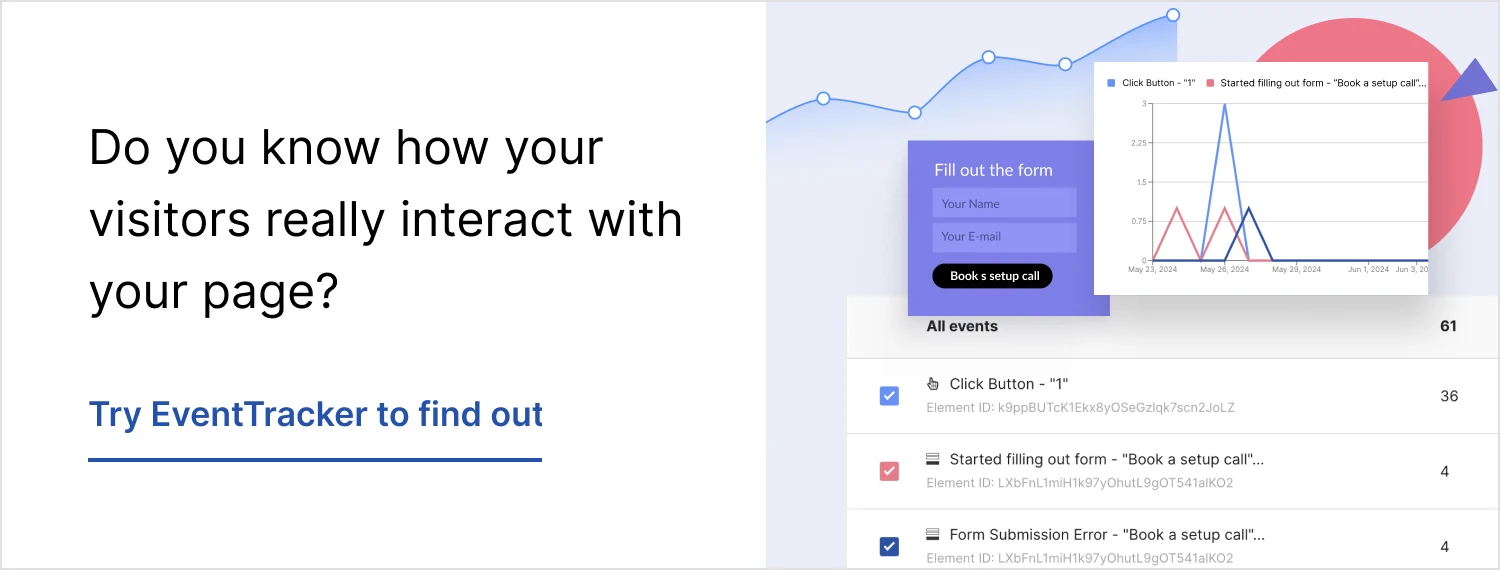
HubSpot
To effectively leverage HubSpot for your PPC campaigns, consider integrating its lead tracking features. This allows you to monitor how leads interact with your website post-click, providing insights into the customer journey and aiding in the refinement of lead nurturing processes. Additionally, establishing automated workflows can significantly enhance follow-up efforts with leads generated from these campaigns. For instance, you can automate the sending of personalized emails to users who filled out a contact form but did not schedule an appointment, ensuring no potential lead is overlooked.
WordStream
Use WordStream’s 20-Minute Work Week tool to effortlessly get automated recommendations for enhancing your PPC campaigns. This feature is designed to uncover quick wins and optimizations that can be implemented swiftly, saving you time. For keyword strategy, leverage WordStream’s keyword research tool to identify high-performing keywords. It’s also beneficial to focus on adding negative keywords to exclude irrelevant traffic, thereby improving the efficiency of your campaigns. Additionally, make it a habit to regularly review the performance dashboard. This practice helps track key metrics and identify areas needing improvement, ensuring a high level of performance and aiding in the achievement of your campaign goals.
How Frequently Should You Optimize Your PPC Healthcare Campaigns?
You should optimize your PPC healthcare campaigns regularly to ensure they remain effective and cost-efficient. At a minimum, review and adjust your campaigns on a weekly basis to catch any immediate issues and make necessary adjustments to bids, keywords, and ad copy. This helps maintain performance and address any fluctuations in search trends or competition.
Monthly, conduct a more in-depth analysis to evaluate the overall performance of your campaigns, identify longer-term trends, and make strategic adjustments. This includes reviewing which keywords are driving the most conversions, analyzing the performance of different ad groups, and updating your landing pages for better conversion rates.
Quarterly, perform a comprehensive audit of your entire PPC strategy. This should involve reassessing your budget allocations, exploring new keyword opportunities, and incorporating any new services or changes in patient needs. Using tools like Google Analytics, SEMrush, and Ahrefs, you can gather detailed insights to inform these adjustments. Regular optimization not only improves campaign performance but also helps in adapting to changing market dynamics and patient behaviors.
4 Examples of PPC Campaigns in Healthcare
Here are four examples of PPC campaigns in healthcare:
1. Healthcare company example – video ad
A healthcare company running a video ad campaign on YouTube can effectively showcase new treatments or share patient testimonials. Video ads are highly engaging and can convey complex information in an easily digestible format.
In our example, the healthcare provider created a video to establish their online presence and build awareness among potential patients. The video features neutral colors, gentle camera movements, and satisfied patients, aiming to establish trust and emotional connections with potential patients and encourage them to seek more information or schedule an appointment.
2. Hair supplements example – shopping ad
A company selling hair supplements can use shopping ads to display its products directly in Google search results. These ads include product images, prices, and links to the merchant’s website, making it easy for users to find and purchase the supplements.
For this example, we conducted a search for “hair supplements” and found numerous results optimized for this keyword. Shopping ads’ visual appeal helps capture attention and drive higher conversion rates.
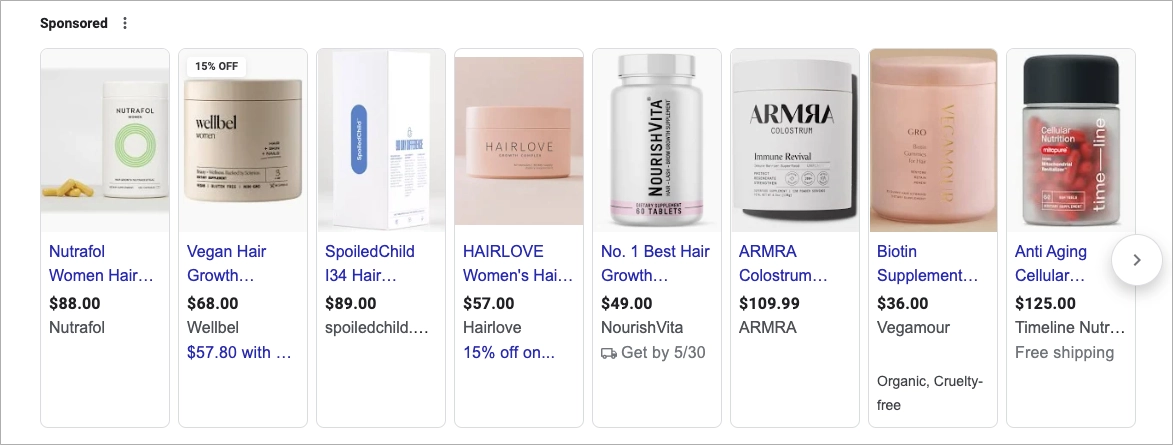
3. Local periodontist example – search ad
A local periodontist can leverage paid search campaigns to target patients looking for dental specialists in their area. By bidding on keywords such as “periodontist near me” or “gum disease treatment,” the periodontist ensures their healthcare ads appear at the top of search engine results pages (SERPs) when potential patients are searching for these services. This targeted approach increases the likelihood of attracting local patients in need of specialized dental care.
The example ad was found by searching for “dental implants Boston.” It includes information about the clinic’s location, a call-to-action to book an appointment, a promise of top-quality service, and a periodontist’s name.

4. Vision vitamins example – display ad
A company offering vision vitamins can use display ads to promote their products across a network of relevant websites. Display ads are visual and can include images or graphics that make the product stand out. These ads can be targeted to appear on health and wellness websites, blogs, and forums where users are likely to be interested in vision health, thus increasing brand visibility and driving traffic to their online store.
For instance, a pharmaceutical company created a banner ad showcasing their product with a simple CTA button and placed it on a medical website to ensure reaching users who are highly likely to be interested in eye health.
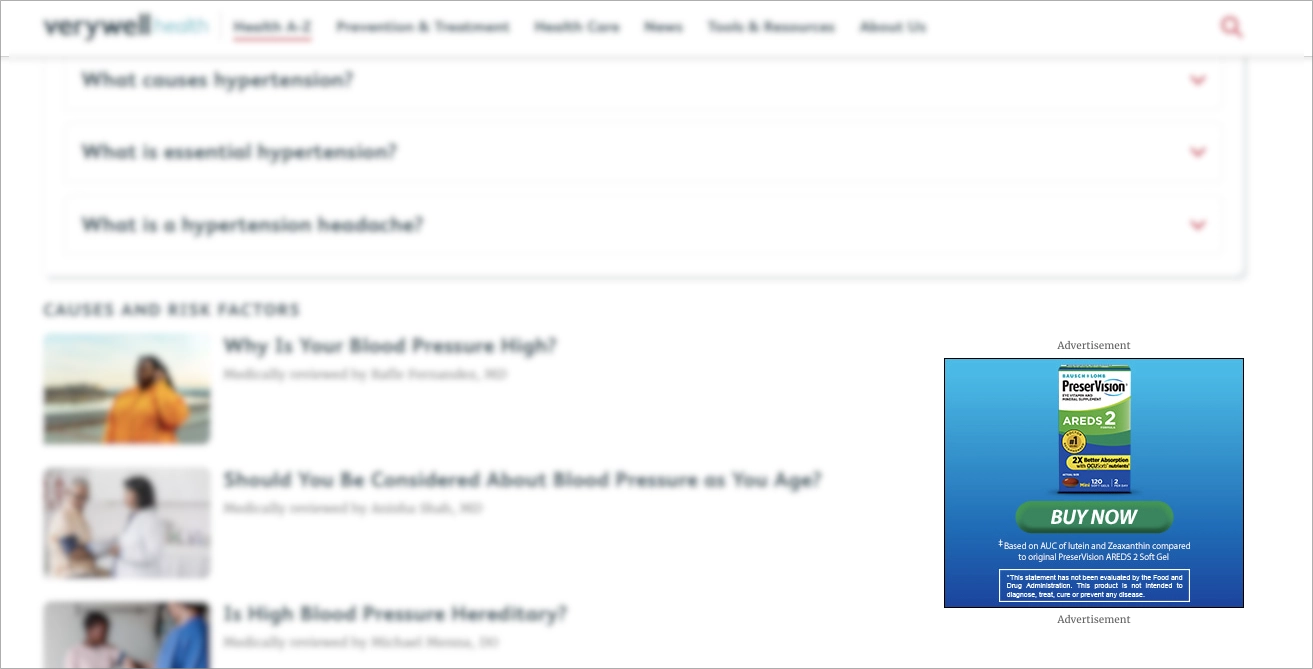
Below you can get more ideas and inspirations for effective PPC strategy in the healthcare business:
- Local clinic running search ads for flu vaccinations: Targeted ads for flu shots during flu season.
- Hospital promoting new surgical techniques with display ads: Banner ads highlighting innovative surgical procedures.
- Dental practice utilizing video ads for cosmetic dentistry: Engaging video ads showcasing before-and-after results.
- Wellness center leveraging Gmail ads for wellness packages: Personalized email ads promoting wellness services.
- A pharmaceutical company using shopping ads for OTC medications: Ads displaying over-the-counter medication options.
- Telemedicine service running search ads for virtual consultations: Ads targeting patients seeking online consultations.
How to Measure the Success of Your Healthcare PPC Campaigns?
Measuring the success of your healthcare PPC campaigns involves setting clear goals and KPIs, using conversion tracking, analyzing CTR, evaluating conversion rates, monitoring CPC, calculating ROI, assessing quality scores, and utilizing reporting tools and audits. Below you can find detailed descriptions of those metrics and methods.
- Set Clear Goals and KPIs: Define specific objectives such as increasing patient inquiries or bookings. Establish KPIs like click-through rates (CTR), conversion rates, and return on investment (ROI) to measure success.
- Use Conversion Tracking: Implement tools like Google Ads and Google Analytics to track actions like appointment bookings and contact form submissions. This helps assess how effectively your PPC campaigns drive desired actions.
- Analyze Click-Through Rates (CTR): Monitor CTR to gauge ad relevance and engagement. A higher CTR indicates compelling ad copy. Regularly conduct A/B testing to improve CTR.
- Evaluate Conversion Rates: Measure how well your landing pages convert visitors into patients. Use tools like Landingi to A/B test different page elements and optimize for higher conversion rates.
- Monitor Cost Per Conversion: Track this metric to manage your budget efficiently. Lower CPC by refining keyword targeting, enhancing ad quality, and optimizing landing pages.
- Calculate Return on Investment (ROI): Use the formula ROI=(Revenue from PPC Campaign−Cost of PPC CampaignCost of PPC Campaign)×100ROI=(Cost of PPC CampaignRevenue from PPC Campaign−Cost of PPC Campaign)×100 to determine financial success.
- Assess Quality Score: Google Ads’ Quality Score affects costs and ad positions. Improve it by ensuring high relevance and quality of keywords, ads, and landing pages.
- Utilize Reporting Tools and Conduct Audits: Leverage Google Analytics for detailed performance reports and perform regular audits to identify issues and optimization opportunities, ensuring maximum campaign efficiency.
How to Track ROI and Conversion Rates in Healthcare PPC
To track ROI and conversion rates in healthcare PPC, set up conversion tracking using tools like Google Ads and Google Analytics to monitor valuable actions such as appointments and form submissions. Calculate cost per conversion and ROI to measure financial success, and use attribution models to understand the customer journey and allocate credit to different touchpoints. Regularly review performance data, make necessary adjustments, and create reports to optimize your campaigns and maximize your advertising investment.
What Are the Latest Trends in PPC Healthcare Marketing?
The latest trends in healthcare PPC include using AI for ad optimization, increasing the focus on mobile ads, and the growing importance of video content. Keeping up with trends helps you stay competitive and ensure your campaigns use the latest strategies and technologies.
What Are Common Mistakes to Avoid in Healthcare PPC?
In Healthcare PPC, avoid common mistakes such as not targeting the right keywords, neglecting landing page optimization, failing to track performance, and not complying with healthcare regulations. Being aware of these pitfalls helps in creating more effective and compliant ad campaigns.
How to Choose the Right PPC Agency for Your Healthcare Business?
When choosing a PPC agency for the healthcare business, look for one with experience in the medical sector, a proven track record of success, and a clear understanding of compliance requirements. A good agency will help you navigate the complexities of healthcare marketing and achieve your online advertising goals.
How to Collect Leads From PPC Healthcare Campaigns?
To collect leads from PPC healthcare campaigns, create compelling ads with strong calls to action (CTAs) that encourage users to click through to your landing pages. Utilize tools like Landingi to design and optimize these landing pages, ensuring they are user-friendly and feature clear forms for capturing lead information, such as contact details and service interests. Additionally, implement conversion tracking to monitor lead submissions and use remarketing strategies to re-engage users who have previously interacted with your site but haven’t converted yet. By combining these tactics, you can effectively generate leads and enhance the performance of your PPC campaigns.
Next Steps to Elevate Your Healthcare PPC Efforts
With a solid understanding of PPC strategies and tools for the healthcare sector, the next critical step is to optimize your landing pages. High-quality landing pages are pivotal in converting clicks into actionable leads and ultimately, patients. Utilizing a reliable platform like Landingi can significantly enhance your medical PPC campaigns in the competitive healthcare industry. Landingi offers intuitive tools for building, testing, and optimizing landing pages, ensuring they align seamlessly with your ad copy and provide a smooth, engaging user experience. By creating dedicated landing pages for each campaign, you can address the specific needs of your audience, increasing the likelihood of conversion. This is especially true in the competitive realm of paid search, where standing out is key to success.
To effectively generate leads, begin by designing landing pages that are not only visually appealing but also informative and easy to navigate. Incorporate clear calls to action (CTAs), compelling headlines, and concise, relevant content that resonates with your target audience. Use A/B testing to compare different page elements and refine your approach based on data-driven insights. Landingi’s integration capabilities with various CRM systems and analytics tools make it easier to track performance and adjust your strategies in real time. By leveraging these features, you can optimize your PPC efforts, achieve better ROI, and ensure your healthcare services reach and engage the right audience effectively.

